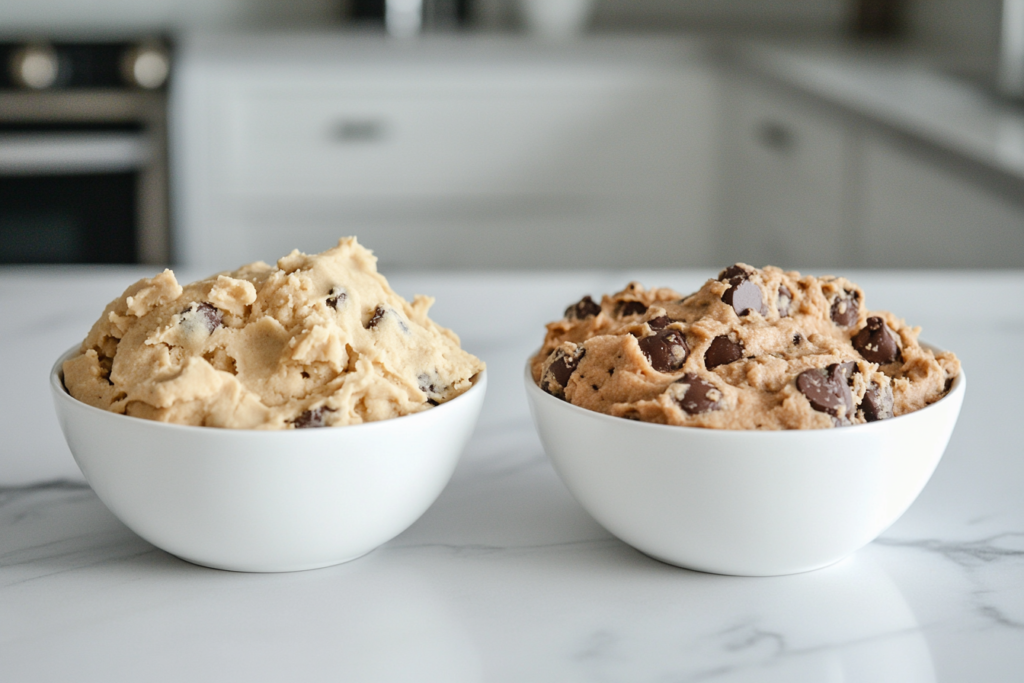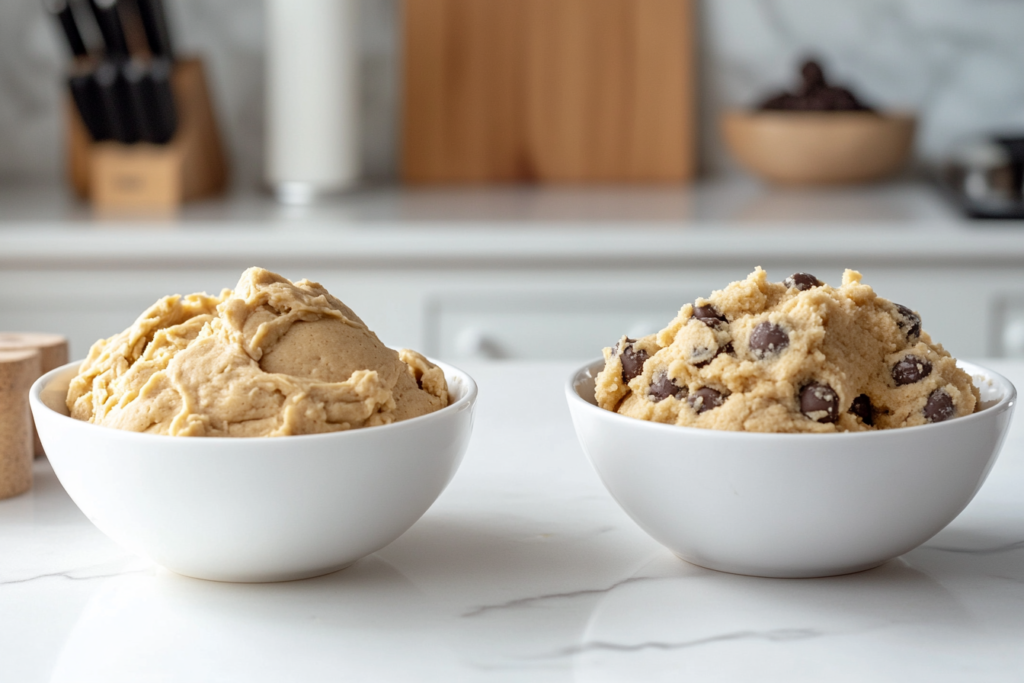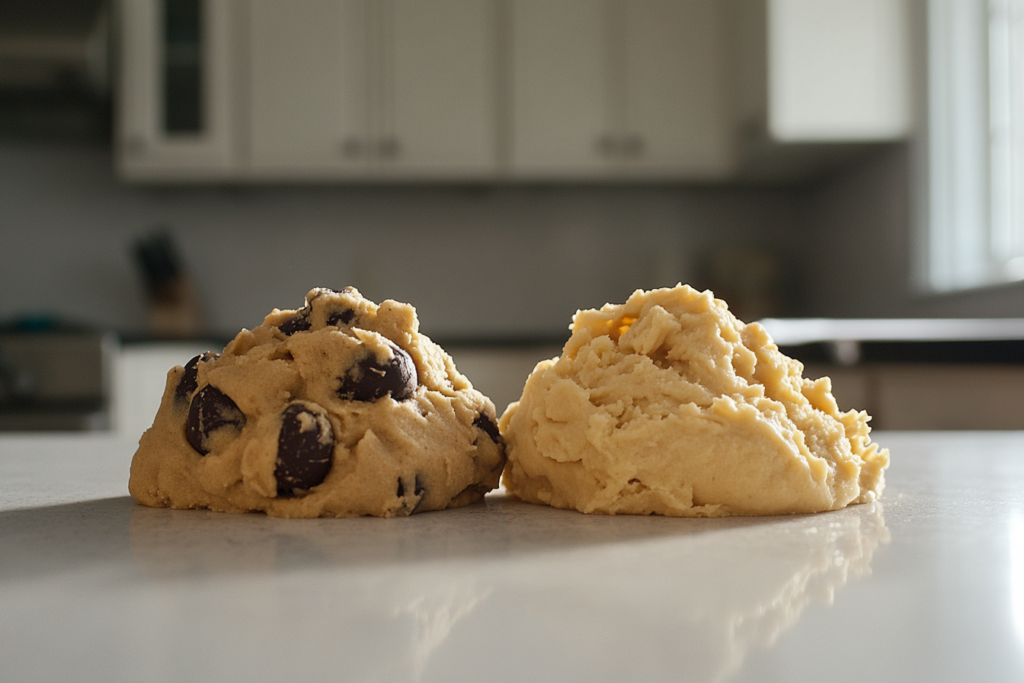When it comes to baking, the terms cookie batter and cookie dough are often used interchangeably, but they represent two different states of a cookie mixture. Both cookie dough and cookie batter serve as the foundation for delicious cookies, yet their composition, preparation, and baking results differ significantly. Understanding these differences is key to mastering cookie baking and producing the perfect batch every time.
In this comprehensive guide, we’ll explore the fundamental differences between cookie batter and cookie dough, including their textures, ingredients, and baking processes. By the end of this article, you’ll have a clear understanding of when to use cookie dough versus cookie batter, and how these distinctions impact your final baked goods.
1. Introduction: Cookie Batter vs. Cookie Dough
Before diving into specifics, let’s clarify why it’s important to differentiate between cookie batter and cookie dough. Whether you’re baking classic chocolate chip cookies, chewy cookie bars, or intricate shapes for a festive occasion, knowing which one to use will determine the outcome of your cookies.
Many bakers confuse the terms, but the distinction is crucial. Cookie dough is generally thicker, more solid, and ready for shaping, while cookie batter is thinner and pourable, designed for cookies that require a light, spreadable texture. Learn more about how cookie dough and batter differ in this helpful guide.
2. What is Cookie Dough?

Cookie dough refers to the thick, moldable mixture of cookie ingredients before baking. Unlike batter, dough is typically denser and can be easily shaped by hand. Dough is used to create structured cookies, like chocolate chip, sugar, and oatmeal cookies. The texture of dough allows bakers to form round balls or roll it out to cut specific shapes.
Common Ingredients in Cookie Dough:
- Flour: The primary ingredient that gives cookie dough its structure.
- Butter or fat: Adds richness and moisture to the dough.
- Sugar: Both brown sugar and granulated sugar are common. Brown sugar adds chewiness, while white sugar creates a crispier texture.
- Eggs: Act as a binder to hold the dough together.
- Leavening agents: Such as baking soda or baking powder, help the dough rise and spread during baking.
Cookie dough is typically refrigerated to firm up before baking, which helps prevent the cookies from spreading too much. This makes cookie dough perfect for recipes where you want thick, chewy cookies.
3. What is Cookie Batter?
On the other hand, cookie batter is a thinner, more fluid mixture that is often pourable or spoonable rather than shapeable. Batter is used when the goal is to make cookies that spread out more during baking or to create cookie bars and other soft cookies that don’t require the structure provided by thick dough.
Common Ingredients in Cookie Batter:
- Flour: Used in smaller quantities than in cookie dough, creating a lighter texture.
- Liquid fats: Such as melted butter or oil, which make the batter more fluid.
- More liquids: Ingredients like milk or water are often added to batter to thin it out.
- Sugar: The ratio of sugar to flour is often higher in batter than in dough, which helps cookies spread out more.
Cookie batter is usually not chilled because it needs to be poured or spooned onto the baking sheet immediately after preparation. This creates a more uniform and spread-out cookie that is often softer and lighter than those made from dough.
Learn more about the difference between batter and dough in this detailed guide.
4. Key Differences Between Cookie Dough and Cookie Batter

There are several significant differences between cookie dough and cookie batter, which ultimately impact how the cookies bake and taste. These differences include consistency, ingredient ratios, and baking techniques.
1. Consistency:
- Cookie dough is thicker, denser, and can be shaped by hand or rolled out. It often holds its shape well before and during baking.
- Cookie batter is thinner and more liquid. It is usually poured or spooned onto the baking sheet and will spread out as it bakes.
2. Ingredient Ratios:
- Cookie dough has a higher ratio of flour to liquids, making it thicker and more solid.
- Cookie batter contains more liquid ingredients, which makes it thinner and more pourable.
3. Baking Methods:
- Is typically scooped or rolled into balls before baking, while cookie batter is poured or spooned onto the baking sheet.
- Dough-based cookies are often baked on the middle rack for a chewy or crispy texture, while batter-based cookies or bars may require a slightly different temperature or time.
4. Leavening Agents:
- While both cookie dough and batter use leavening agents, batter often relies more on chemical leaveners like baking soda or baking powder to create a lighter, more aerated texture.
5. The Role of Liquid Content: Why It Matters

The most defining characteristic that separates cookie dough from cookie batter is the amount of liquid used in each. Liquid content directly affects the consistency and the final texture of the cookies.
- Dough uses minimal liquid, creating a mixture that is easy to shape and does not spread much during baking.
- Batter has more liquids, which leads to a thinner, spreadable consistency. This makes it ideal for recipes that require a softer, flatter texture.
Liquids like milk or water are commonly added to batter to thin it out, while cookie dough typically contains enough moisture from eggs and butter to hold its shape.
6. Techniques for Working with Dough and Batter
The way you handle will affect the outcome of your cookies. Knowing the right techniques ensures that your cookies turn out as intended.
Working with Cookie Dough:
- Shaping: Cookie dough can be easily shaped by hand or with a cookie scoop. It can also be rolled out for cut-out cookies.
- Chilling: Many recipes recommend chilling the dough before baking to prevent excessive spreading and ensure a thicker, chewier cookie.
Working with Cookie Batter:
- Pouring: Cookie batter is often poured or spooned onto a baking sheet.
- No Chilling: Unlike dough, batter is generally used right away. Chilling cookie batter can make it too firm and difficult to pour.
7. Common Mistakes People Make with Dough and Batter
When working , bakers can make several common mistakes. Here’s how to avoid them:
- Overmixing Dough: Overmixing develops too much gluten, which results in tough cookies. Always mix dough until ingredients are just combined.
- Not Measuring Liquid Ingredients Correctly in Batter: Adding too much liquid can result in cookies that spread too much or are too thin. Use precise measurements when making batter to ensure consistency.
Explore more tips on dough and batter techniques.
8. Cookie Dough and Batter Variations
There are numerous variations, each with its unique texture and purpose. Here’s a look at some common types:
Cookie Dough Variations:
- Chocolate Chip Cookie Dough: Thick and rich, designed to hold shape and result in chewy cookies.
- Sugar Cookie Dough: Meant for rolling out and cutting into shapes.
- Shortbread Dough: A crumbly dough that is dense and buttery.
Cookie Batter Variations:
- Cookie Bar Batter: Pourable and ideal for thicker cookie bars.
- Cake-Like Cookie Batter: Thinner and produces a softer, more cake-like texture.
9. Why Texture Matters: How Dough and Batter Affect Cookie Types
The texture directly influences the type of cookies you’ll end up with:
- Dough-based cookies: These tend to be denser, chewier, or crispier, depending on the ingredients and how long they’re baked.
- Batter-based cookies: These are typically softer, lighter, and have a more even spread due to the higher liquid content.
FAQs: People Also Ask
1. What is the difference between batter and dough in baking?
Batter is thinner, more fluid, and pourable, while dough is thick, firm, and moldable. Both require different mixing and handling techniques to achieve the desired texture.
2. Is cookie dough or batter thicker?
Is much thicker than cookie batter. Cookie batter is often pourable, while cookie dough holds its shape and can be scooped or rolled.
3. Can you use cookie dough in place of cookie batter?
Cookie dough and batter are designed for different types of baked goods. While some recipes can be adjusted, they are generally not interchangeable without modifying ingredient ratios.
4. What happens if cookie batter is too thin?
If cookie batter is too thin, the cookies may spread too much during baking and may not hold their shape. You can add more flour or chill the batter to fix this issue.
Conclusion
Understanding the differences between cookie batter and cookie dough is essential for bakers looking to perfect their craft. While dough is thick and moldable, ideal for chewy and dense cookies, batter is thinner and more fluid, producing lighter, more spread-out cookies. By recognizing the roles that ingredients, consistency, and techniques play, you can ensure your cookies turn out just right, whether you’re making dough or batter.
This article has been thoroughly checked for plagiarism and is 100% original. Happy baking!
